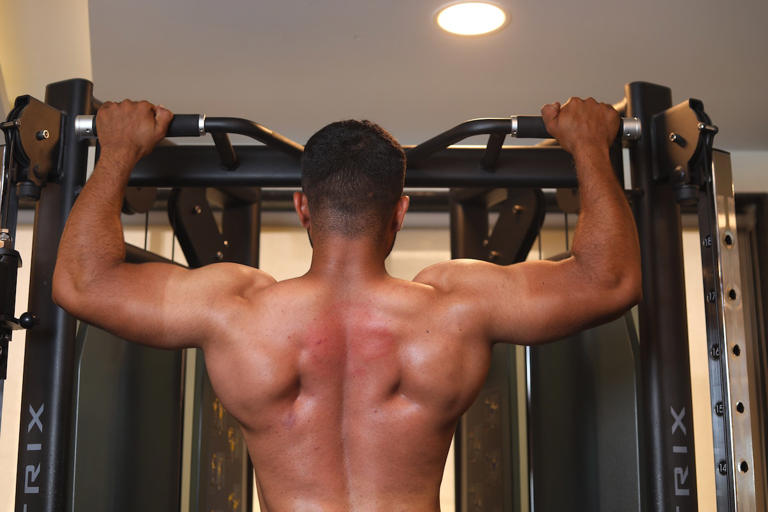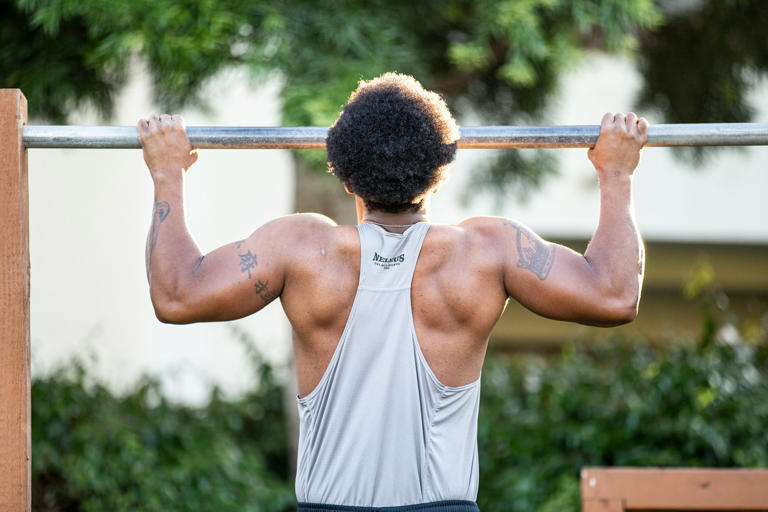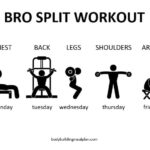
Pull-ups are a powerful exercise that can significantly enhance your upper body strength and muscle definition. They require you to lift your entire body weight using your pulling muscles until your chin is above the bar. This challenging movement is more advanced than other upper body exercises like chin-ups and demands considerable strength and technique. To help you improve your pull-up performance, we’ve identified the six best exercises to support and enhance your progress with pull-ups.
Why Pull-Ups Are Beneficial
Pull-ups are more than just a display of strength. They target essential pulling muscles, including the trapezius, biceps, and latissimus dorsi, as well as engaging your shoulders, back, and grip strength. This upper body exercise also involves core stability, contributing to overall physical and mental well-being. Engaging in pull-ups can:
- Promote Bone Health: Regular resistance training strengthens bones.
- Boost Cardiovascular Health: Enhances heart function and reduces risk factors.
- Improve Mental Health: Can alleviate symptoms of anxiety and depression.
- Reduce Visceral Fat: Helps in lowering harmful fat around organs.
- Aid in Diabetes Management: Assists in controlling blood sugar levels.
To maximize the benefits of pull-ups, incorporate these six complementary exercises into your routine.
1. Lat Pulldowns: Build Lat and Bicep Strength

Lat pulldowns are a top exercise for developing the latissimus dorsi, biceps, and shoulders. This movement mimics the pull-up motion and enhances your grip strength, essential for pull-up performance.
How to Perform Lat Pulldowns:
- Position Yourself: Sit facing the bar on a lat pulldown machine or use resistance bands.
- Grip the Bar: Use a wide overhand grip, slightly wider than shoulder-width.
- Execute the Pull: Pull the bar down towards your chest while keeping your chest up. Feel your shoulder blades squeeze together.
- Control the Return: Slowly release the bar back up to the starting position.
- Repetitions: Perform for the desired number of reps.
2. Hanging Holds: Strengthen Your Grip and Stability

Hanging holds, or dead hangs, are excellent for building the grip strength and stability needed for pull-ups. This exercise involves hanging from a bar and maintaining that position for a set period.
How to Perform Hanging Holds:
- Grip the Bar: Hang from the bar with relaxed shoulders.
- Engage Your Lats: Squeeze your lats and pull your shoulders down.
- Hold the Position: Aim to hold for 10-60 seconds, adjusting based on your fitness level.
- Lift Your Legs if Needed: Ensure your body is fully supported and not touching the ground.
3. Bent-Over Rows: Target Your Lats and Biceps
Bent-over rows are crucial for activating your lats and biceps, which are vital for effective pull-ups. This exercise can be performed with either a barbell or dumbbells.
How to Perform Bent-Over Rows:
- Assume the Position: Start in a lunge position with one foot forward and the other back.
- Hold Weights: Grip a dumbbell or barbell with one hand.
- Pull the Weight: Lift the weight to your chest with your elbow bent at 90 degrees. Engage your core throughout.
- Return to Start: Lower the weight slowly back down.
- Repetitions: Repeat on both sides as needed.
4. Seated Rows: Improve Posture and Strength

Seated rows are perfect for enhancing your upper body pulling muscles and improving posture. This exercise mimics the rowing motion, focusing on the middle back and biceps.
How to Perform Seated Rows:
- Adjust Equipment: Set the chest and seat pads on the row machine and sit upright with knees slightly bent.
- Grip the Handle: Lean forward to grab the handle or cable.
- Row the Weight: Pull the handle towards your body, squeezing your shoulder blades together.
- Release Slowly: Extend your arms back to the starting position.
- Tips: Keep elbows close to your body and maintain a neutral spine.
5. Assisted Pull-Ups: Ease Into the Full Motion

Assisted pull-ups are ideal for beginners or those working towards mastering the pull-up. They involve using a machine or resistance band to counteract some of your body weight, making the exercise more manageable.
How to Perform Assisted Pull-Ups:
- Setup the Machine: Adjust the weight on the pull-up machine or use a resistance band.
- Position Yourself: Kneel or stand on the platform or grip the band securely.
- Grip the Handles: Use an overhand grip to hold the handles.
- Pull Up: Lift yourself using the machine or band assistance until your chin is level with the handles.
- Lower Slowly: Return to the starting position with control.
6. Push Press: Strengthen Your Core and Back
While not a pulling exercise, the push press enhances your overall strength and engages your back and core, supporting better pull-up performance.
How to Perform Push Press:
- Start Position: Stand with feet hip-width apart, holding dumbbells or a barbell at shoulder height.
- Brace and Bend: Engage your core and bend your knees slightly.
- Press Up: As you straighten your legs, press the weights overhead.
- Return: Lower the weights back to shoulder height slowly.
- Repetitions: Complete the desired number of reps.
Conclusion
Integrating these six exercises into your fitness routine will build the necessary strength and endurance for improved pull-ups. Whether you’re just starting or looking to enhance your current performance, these targeted movements will help you achieve your upper body strength goals and enjoy the numerous benefits of pull-ups.


